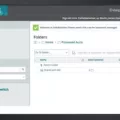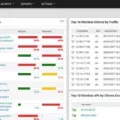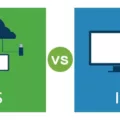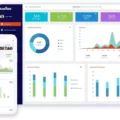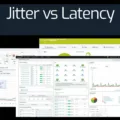The User Datagram Protocol (UDP) is an important communication protocol that is used across the Internet for critical time-sensitive transmissions like DNS lookups and video streaming. It is a connectionless protocol that allows data to be transmitted without having to establish a formal connection first. In comparison to the transmission control protocol (TCP), UDP is faster, simpler, and more efficient, but it does not have the capability of retransmitting lost data packets as TCP does.
UDP has numerous applications on the Internet. It is used by the Domain Name System (DNS) to quickly resolve domain names into IP addresses, Simple Network Management Protocol (SNMP) to monitor devices on a network, Routing Information Protocol (RIP) for routing information between different nodes, and Dynamic Host Configuration Protocol (DHCP) for dynamically assigning IP addresses to nodes on a network.
In addition, UDP can also be used for other time-sensitive applications such as online gaming and video streaming. It helps speed up communications by removing the need for a two-way connection before data can be transferred. Therefore, it makes it easier for applications that require quick response times such as video streaming and online gaming to function smoothly.
Overall, UDP provides an important service to many different applications on the Internet. By allowing faster transfers with fewer complications than TCP, UDP makes it possible for applications that require speed and efficiency to function properly on networks without any disruptions or delays in performance.

Understanding the UDP Protocol
The UDP protocol is a type of communication protocol used on the Internet for quick, real-time data transmissions. It does not require a connection to be set up beforehand, unlike other protocols such as TCP. This means that data can be sent quickly and efficiently, as it doesn’t require the same amount of overhead to establish a connection. The UDP protocol is especially useful for time-sensitive applications such as video streaming and DNS lookups. With UDP, data is sent in datagrams (packets) from one computer to another. This eliminates the need for error correction and acknowledgments of receipt, which makes it faster than TCP. However, this also means that data may not always get delivered successfully, so it is important to understand the risks before using UDP for important transmissions.
Differences Between TCP and UDP
TCP (Transmission Control Protocol) and UDP (User Datagram Protocol) are two of the most commonly used protocols in network communication. The main difference between them is that TCP is a connection-oriented protocol while UDP is a connectionless protocol.
TCP establishes a connection between two hosts before any data can be sent, while UDP does not require the establishment of a connection in order to send data. This means that TCP provides reliable, error-checked delivery of data with flow control, whereas UDP is faster, simpler, and more efficient but does not guarantee reliable delivery of data.
In addition to this, TCP requires acknowledgment packets in order to guarantee that all packets were received, which increases overhead and slows down transmission speed. On the other hand, UDP does not require acknowledgment packets, so it can provide much faster speeds. However, this also means that the retransmission of lost data packets cannot be done with UDP as it cannot detect lost packets.
To summarise; TCP provides reliable error-checked delivery of data with flow control and retransmission of lost data packets, but at the cost of being slower due to its extra overhead. Whereas UDP is faster and more efficient but can only provide best-effort delivery without guarantee or retransmission of lost packets.
Key Protocols That Use UDP
The four key Internet protocols that use the User Datagram Protocol (UDP) are the Domain Name System (DNS), the Simple Network Management Protocol (SNMP), the Routing Information Protocol (RIP), and the Dynamic Host Configuration Protocol (DHCP).
The Domain Name System, or DNS, is a distributed database used to translate domain names into numerical IP addresses. It uses UDP datagrams to transfer resource records between DNS servers.
The Simple Network Management Protocol, or SNMP, is a standard protocol used for network management and monitoring. It uses UDP messages to exchange management information between devices on a network.
The Routing Information Protocol, or RIP, is a distance-vector routing protocol used to exchange routing information between routers on an Internet Protocol (IP) network. RIP uses UDP datagrams for sending and receiving data over networks.
Finally, the Dynamic Host Configuration Protocol, or DHCP, is a protocol that enables hosts on an IP network to obtain their IP address automatically from a DHCP server. The DHCP server sends its messages using UDP datagrams.
The Benefits of Using UDP Protocol
The UDP protocol is used in applications where speed and efficiency are paramount. For example, it is essential for time-sensitive operations such as DNS lookups, online gaming, and video streaming. UDP eliminates the need for a two-way connection to be established before data can be sent, enabling quicker and more efficient communication. Additionally, UDP doesn’t require any handshaking between the sender and receiver of data, making it ideal for applications that do not require reliability or guarantee of delivery. As such, UDP is often preferred over other protocols in these types of scenarios.
The Benefits of Using UDP Over TCP
UDP is used instead of TCP because it provides a faster and more efficient method of data transmission. It requires less overhead than TCP, which makes it a more efficient protocol for applications that require low latency and/or bandwidth. UDP also does not require acknowledgments or sequencing, allowing for faster data transmission speeds. In addition, UDP is connectionless, meaning that there is no need to establish a connection before sending data. This allows applications to quickly send data without needing to worry about setup or teardown time.
Conclusion
In conclusion, UDP is a reliable and efficient communication protocol used for time-sensitive transmissions across the Internet. It is faster than TCP and does not require a two-way connection before data transmission begins. UDP is used in a number of key Internet applications such as DNS, SNMP, RIP, and DHCP. Thanks to its minimal overhead and speed advantage, UDP is ideal for applications that require fast data transfer with low latency.

